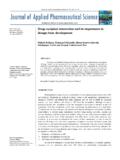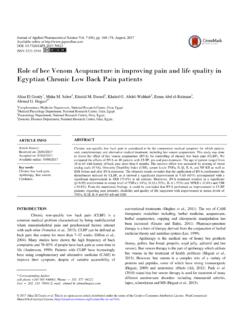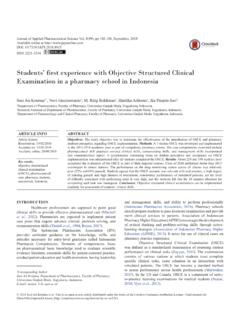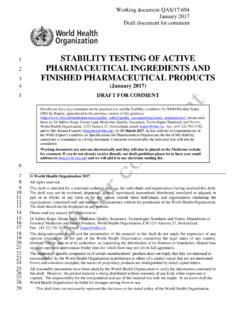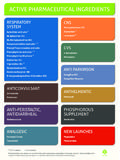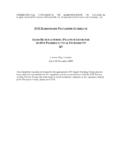Transcription of ISSN: 2231 Stability Testing of Pharmaceutical Products
1 Journal of Applied Pharmaceutical Science 02 (03); 2012: 129-138 ISSN: 2231-3354 Received on: 08-03-2012 Revised on: 17-03-2012 Accepted on: 24-03-2012 Sanjay Bajaj, Neha Sakhuja Swami Vivekanand College of Pharmacy, Banur, India, Dinesh Singla Panacea Biotec Ltd, Lalru, India For Correspondence Dr. Sanjay Bajaj Principal, Swami Vivekanand College of Pharmacy, Sector 8, Banur, 147601, Distt.
2 Patiala, Panjab, India. Phone: 01762 507994, Mobile: 9814412082 Stability Testing of Pharmaceutical Products Sanjay Bajaj, Dinesh Singla and Neha Sakhuja ABSTRACT Stability studies ensuring the maintenance of product quality, safety and efficacy throughout the shelf life are considered as pre-requisite for the acceptance and approval of any Pharmaceutical product . These studies are required to be conducted in a planned way following the guidelines issued by ICH, WHO and or other agencies.
3 Importance of various methods followed for Stability Testing of Pharmaceutical Products , guidelines issued for Stability Testing and other aspects related to Stability of Pharmaceutical Products have been presented in a concise manner in the present review Keywords: Stability , Stability studies, Stability Testing INTRODUCTION Stability Testing of Pharmaceutical Products is a complex set of procedures involving considerable cost, time consumption and scientific expertise in order to build in quality, efficacy and safety in a drug formulation.
4 Scientific and commercial success of a Pharmaceutical product can only be ensured with the understanding of the drug development process and the myriad tasks and milestones that are vital to a comprehensive development plan. The most important steps during the developmental stages include Pharmaceutical analysis and Stability studies that are required to determine and assure the identity, potency and purity of ingredients, as well as those of the formulated Products (Singh et al., 2000).
5 Stability of a Pharmaceutical product may be defined as the capability of a particular formulation in a specific container/closure system to remain within its physical, chemical, microbiological, toxicological, protective and informational specifications (Kommanaboyina et al., 1999). In other words, it is the extent to which a product retains, within the specified limits, throughout its period of storage and use, the same properties and characteristics possessed at the time of its packaging.
6 Stability Testing thus evaluates the effect of environmental factors on the quality of the a drug substance or a formulated product which is utilized for prediction of its shelf life, determine proper storage conditions and suggest labeling instructions. Moreover, the data generated during the Stability Testing is an important requirement for regulatory approval of any drug or formulation (Singh et al., 2000). Journal of Applied Pharmaceutical Science 02 (03); 2012: 129-138 Stability Testing is termed as a complex process because of involvement of a variety of factors influencing the Stability of a Pharmaceutical product .
7 These factors include Stability of the active ingredient(s); interaction between active ingredients and excipients, manufacturing process followed, type of dosage form, container/closure system used for packaging and light, heat and moisture conditions encountered during shipment, storage and handling. In addition, degradation reactions like oxidation, reduction, hydrolysis or racemization, which can play vital role in Stability of a Pharmaceutical product , also depend on such conditions like concentration of reactants, pH, radiation, catalysts etc.
8 , as well as the raw materials used and the length of time between manufacture and usage of the product . A Pharmaceutical product may undergo change in appearance, consistency, content uniformity, clarity (solution), moisture contents, particle size and shape, pH, package integrity thereby affecting its Stability . Such physical changes may be because of impact, vibration, abrasion, and temperature fluctuations such as freezing, thawing or shearing etc.
9 The chemical reactions like solvolysis, oxidation, reduction, racemization etc. that occur in the Pharmaceutical Products may lead to the formation of degradation product , loss of potency of active Pharmaceutical ingredient (API), loss of excipient activity like antimicrobial preservative action and antioxidants etc. (Carstensen et al., 2000). Stability of a Pharmaceutical product can also be affected because of microbiological changes like growth of microorganisms in non sterile Products and changes in preservative efficacy (Matthews et al.)
10 , 1999). Potential adverse effects of instability in Pharmaceutical Products have been given in Table 1. Table 1: Potential Adverse Effects of Instability in Pharmaceutical Products . Potential Adverse Effect Explanation/ Reason Example Stability Parameter Tested Loss of Active Ingredient Increase in concentration of active Ingredient Alteration in bioavailability Loss of content uniformity Decline of microbiological status Loss of Pharmaceutical elegance and patient acceptability Formation of toxic degradation Products Loss of package integrity Reduction of label quality Modification of any factor of functional relevance Degradation of API in product
